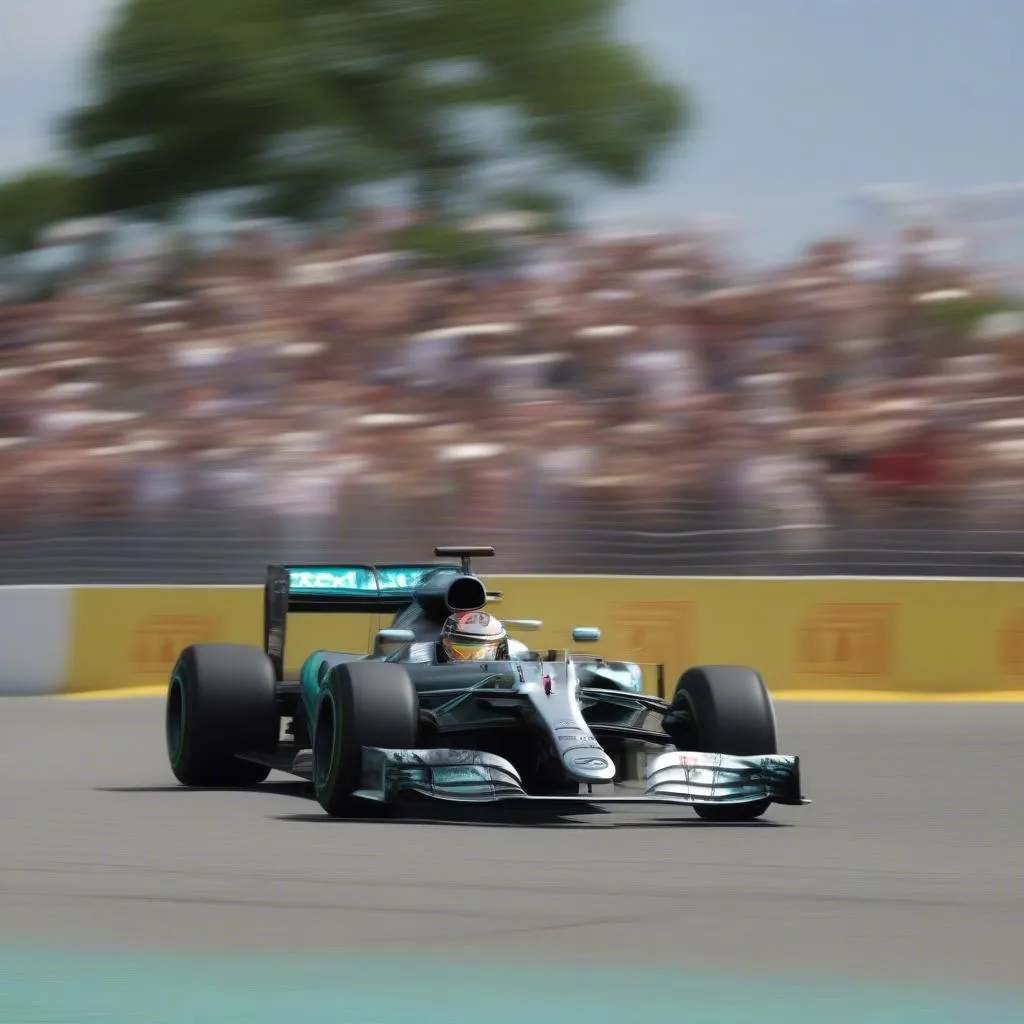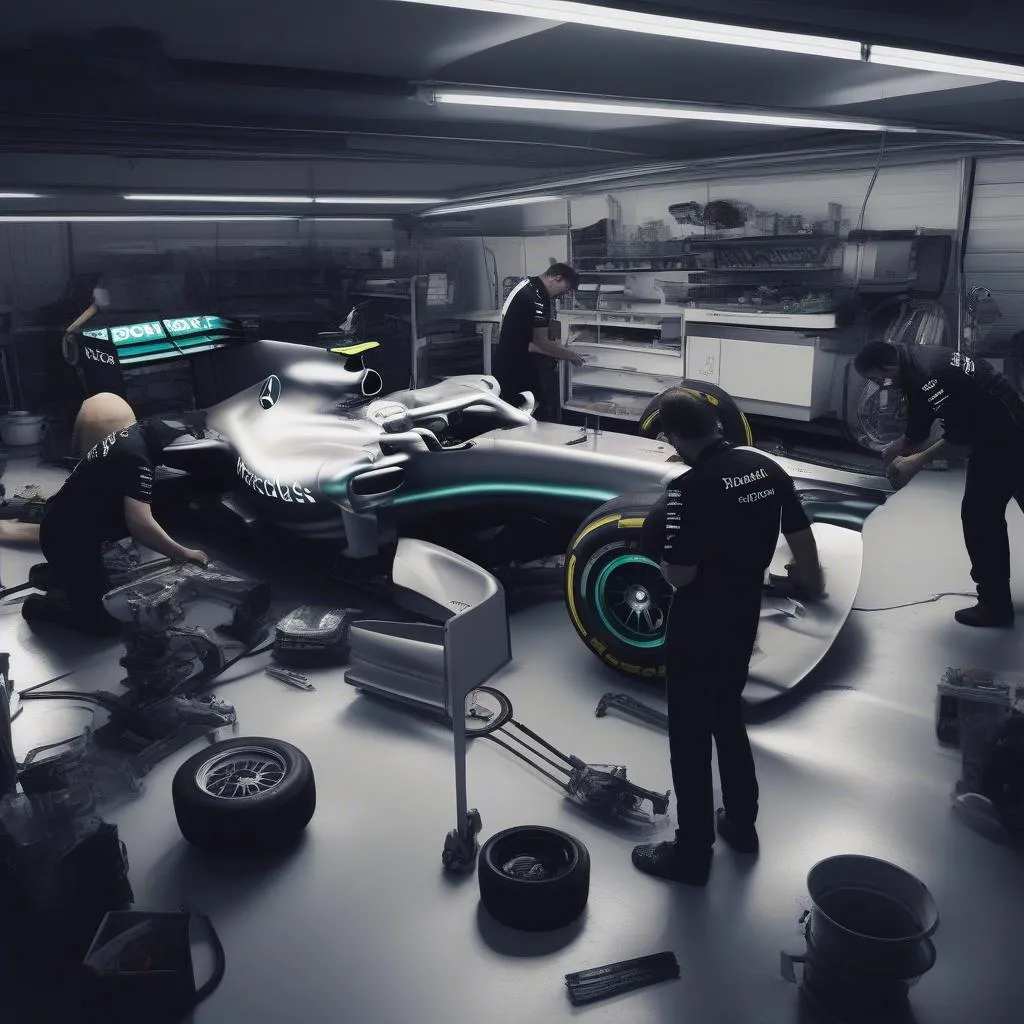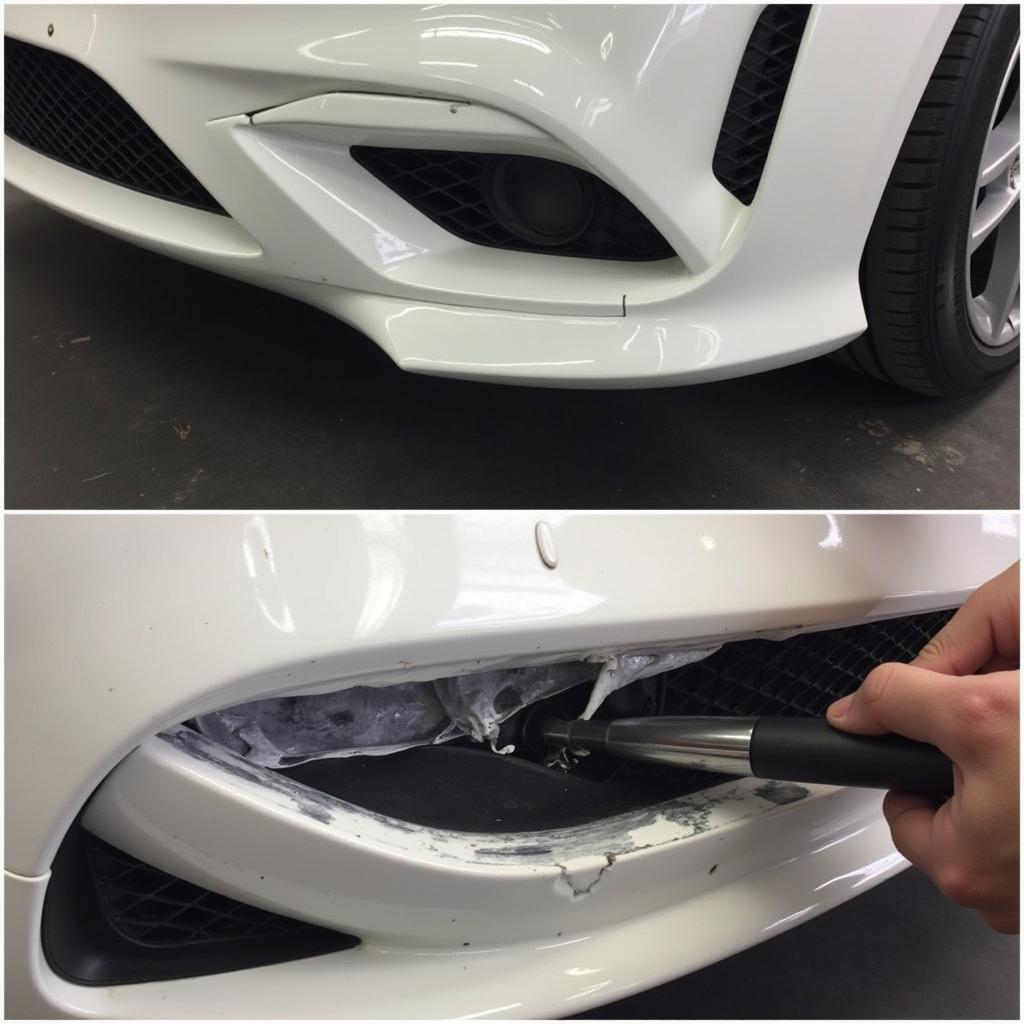The 2022 Formula 1 season saw Mercedes struggle with a rather bumpy issue: porpoising. This aerodynamic phenomenon, where the car bounces up and down on the straights, plagued their performance. But how exactly will Mercedes fix porpoising and reclaim their spot at the top? Let’s dive into the engineering solutions and strategies they’re employing.
Understanding the Root of the Porpoising Problem
Before we can tackle the fix, it’s crucial to understand why porpoising happens. In simple terms, it’s a vicious cycle caused by the ground effect aerodynamics of the new generation of F1 cars. As the car accelerates, the downforce increases, pushing the car closer to the ground. At a certain point, the airflow is disrupted, causing a sudden loss of downforce and the car to rise. This process repeats, leading to the jarring bouncing effect.
Identifying Porpoising in a Mercedes
Mercedes drivers, like Lewis Hamilton, have described the experience as feeling like the car is “bottoming out” on the track. Visually, the car will appear to oscillate up and down, especially at high speeds on straights.
 F1 Car Porpoising
F1 Car Porpoising
Essential Tools for Addressing Porpoising
Fixing porpoising isn’t a simple task and often requires a combination of adjustments:
- Ride Height Adjustments: Raising the ride height is the most straightforward solution. However, this comes at the expense of downforce and, consequently, lap time.
- Floor Modifications: Tweaking the floor design, particularly the edges and diffuser, can help manage the airflow and mitigate the extreme changes in downforce that trigger porpoising.
- Suspension Tuning: Fine-tuning the suspension stiffness and damping can help the car absorb some of the oscillations and improve stability.
- Aerodynamic Updates: Teams like Mercedes have been constantly developing new aerodynamic components like wings and diffusers to improve airflow and reduce the sensitivity to porpoising.
The Road to a Solution: Mercedes’ Approach
Mercedes has been systematically tackling the porpoising problem through a combination of the methods mentioned above:
- Data Analysis: Mercedes has a wealth of data from their car’s sensors. Analyzing this data helps them understand the aerodynamic behavior and pinpoint areas for improvement.
- Simulation and Testing: Before implementing changes on the actual car, Mercedes utilizes sophisticated simulations and wind tunnel testing to evaluate the effectiveness of different solutions.
- In-Season Development: Throughout the season, Mercedes has been bringing updates to the car, incorporating design changes based on their findings.
 Mercedes F1 Mechanics Working
Mercedes F1 Mechanics Working
While a complete eradication of porpoising has been a challenge, Mercedes has made significant progress. “The understanding of these cars is improving all the time,” notes motorsport engineer, Dr. Emily Carter, “and teams like Mercedes are getting better at finding that sweet spot between performance and minimizing porpoising.”
FAQs: Mercedes and Porpoising
Q: Did the new 2022 regulations contribute to the porpoising issue?
A: Yes, the return to ground-effect aerodynamics, while intended to improve racing, inadvertently made cars more susceptible to porpoising.
Q: Can software like that offered by Cardiagtech help diagnose porpoising?
A: While CARDIAGTECH software is excellent for engine diagnostics and other vehicle issues, porpoising is primarily an aerodynamic problem. Its solution lies in design and setup adjustments rather than software fixes. You can learn more about CARDIAGTECH’s range of diagnostic products here.
Q: Is porpoising dangerous for the drivers?
A: While not inherently dangerous, the intense bouncing can be physically demanding for drivers and may impact their concentration and performance.
Conclusion
Mercedes’ battle with porpoising highlights the complexities of modern Formula 1 car design. It’s a testament to the constant pursuit of aerodynamic efficiency, where even the smallest changes can have a significant impact. While there’s no magic bullet solution, Mercedes’ systematic approach, coupled with continuous development, demonstrates their commitment to overcoming this hurdle and returning to their winning ways. To explore more about Mercedes’ journey in combating porpoising and other technical challenges, check out our article on Can Mercedes Fix the Porpoising?


